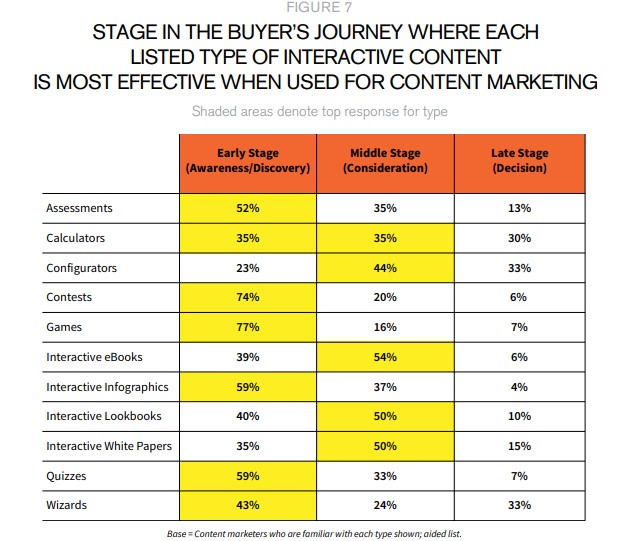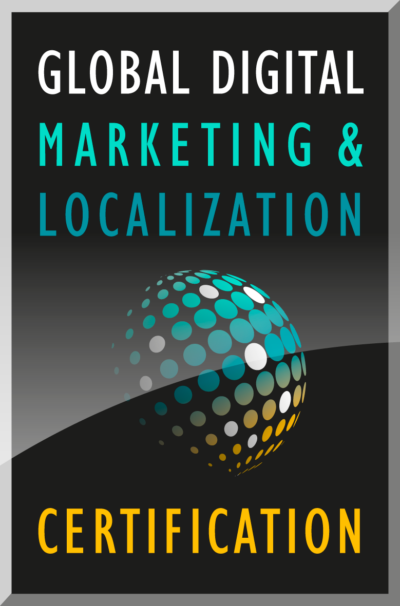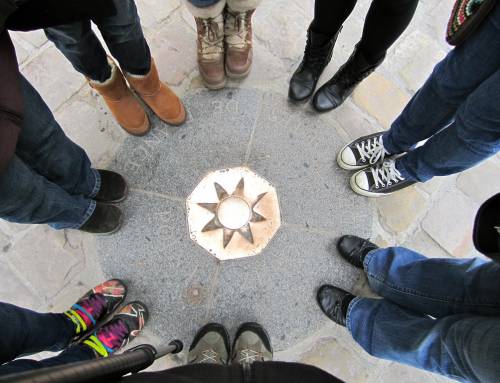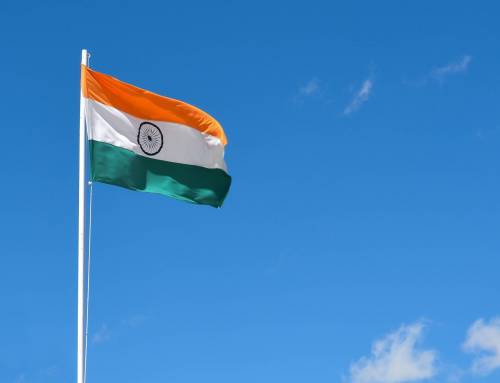This is a paper presented by Suzette St. Pierre, a recent graduate of both the Global Digital Marketing and Localization Certification (GDMLC) program. This paper presents the work being produced by students of The Localization Institute’s Global Digital Marketing and Localization program. The contents of this paper are presented to create discussion in the global marketing industry on this topic; the contents of this paper are not to be considered an adopted standard of any kind. This does not represent the official position of the Brand2Global Conference, The Localization Institute, or the author’s organization.
Introduction
Advertisements are always the gateway from target user-to-product, otherwise how would it be possible to introduce said products (and services) to the public? From ancient civilizations and their use of papyrus for wall postings up to current PPC ads and cookie-enabled targeted advertising; the methods of advertisement have traversed through history and continually progress through a developing digital world. Digital advancements, such as an interactive element, have been incorporated into areas including social media, news outlets, and health which currently support quizzes and hashtags, apps with personal topic choice, and fashion-forward clever tech. Entertainment such as Netflix has joined the world by introducing interactive movies; and now it is time to propel forward and implement major co-brand collaboration with businesses such as McDonald’s, Coke, musicians, film industries, etc, into current leading global online multiplayer games. This will push for a more personal, localized and interactive digital marketing experience to users on an international scale.
The effect of interactive digital media
“ By its very nature, interactive content engages participants in an activity: answering questions, making choices, exploring scenarios. It’s a great way to capture attention right from the start. Individuals have to think and respond; they can’t just snooze through it. ”
– Scott Brinker (Copyblogger 2017)
The future of marketing lies in interactive digital media. According to the Content Marketing Institute in their publication The Symphony of Connected Interactive Content Marketing, “87% [of content marketers] agree that interactive content grabs the attention of the reader more effectively than static content” (Rose 2017, 8), and it continuously grows every year as the demand from tech-savvy generations require more personalized, relatable subject matter. The report further explores the most effective type of content marketing versus other manners in 2017, recognizing at 77% that interactive games culminated as the best interactive content during the consumer awareness/discovery stage.

(Rose 2017, Fig 7, 10)
This is not the first time games and advertising have aligned successfully however. During the 90s and early 2000s the business trend for “advergames” was high (Bump 2019). These campaigns were immensely effective, allowing Crispin Porter & Bogusky to win a Clio award (Parpis 2007) as recognition for creative content marketing in relation to the Burger King franchise. Through their game, Sneak King, players were able to become the brand mascot, the King, and hand-deliver Burger King menu items to characters in-game. This allowed the targeted audience to become acquainted with the Burger King menu and increase overall sales during a six-week period with the launch of the game (Duffy 2007).
The crossover of advert and game in current contexts
So what is the integration of advergames as an interactive digital marketing skill in the current global context? Are they still used to market brand products, or has it fizzled out? Well, it wasn’t until the trend of massively multiplayer online (MMO) games shifted from a PC-oriented and strategy-based game (eg. World of Warcraft), to being developed into cross-platform, battle-esque MMOs that has allowed marketers to benefit on the global scale.
Take for example Splatoon, doing a major promotional venture in 2017 with McDonald’s Japan (Splatoon’s home market), allowing players to choose between team McNuggets or Fries (Bump 2019). The event ended with players receiving a virtual t-shirt for their chosen team that their character could later wear (Inkipedia 2017). This kind of marketing shows us how brands can capture the trend of online social gaming, but it still has room for growth. Although McDonald’s Japan gained traction with Splatoon players, it is no comparison to the Wendy’s marketing team who leveraged a situation out of one of Fortnite’s battle events: Team Burger vs Team Pizza 2018. Wendy’s promotes a “fresh never frozen” patty policy, and when the brand became aware that Fortnite’s Team Burger were required to collect meat and store them in freezers around the map during the event, Wendy’s joined the game and created such a marketing stunt uproar they were recognized with awards from both the Clio Awards and the Cannes Lions International Festival of Creativity (Bump 2019), as well as tweets of recognition from competitors such as Arby’s and KFC (adforum 2019). It included a multitude of players following Wendy’s example of destroying meat freezers around the game map, and an increase of Wendy’s mentions across social media platforms by 119% (adforum 2019).
It’s all about the message!
How is this applicable to digitally advertising on a global scale? Well it is important to first acknowledge that the public consumer wants to follow interesting content, whether that be an internet influencer or marketers themselves. Entertainment is key, and the above mentioned examples are evidence that the video-game market is booming and recognized by many, with the potential to be tapped into. That isn’t to say that marketers aren’t already considering brand-inspired generated content currently. The difference however is attributed to brand awareness, understanding, and retention, rather than marketers focusing solely on promotion of their product. This is why Sneak King and Wendy’s both received Clio Awards for their innovative marketing by integrating product image and message in an engaging way with consumers (Burger King’s menu familiarity, and Wendy’s brand message, respectively). A more modern example of this would be KFC and its marketing team, asking its agencies to “Bring us opportunities that aren’t mainstream yet” (Entis 2019) and led to the production of I Love You, Colonel Sanders: A Finger Lickin’ Good Dating Simulator (Steam 2019). The game advertises KFC products through a current trend of the niche-gamer scene: dating simulation, allowing players to interact and immerse themselves in corny punchlines and saucy situations via romantic ventures with Colonel Sanders. Reported back was a 20% increase in brand index among customers, and 25% with gamers by market-research company YouGov, which KFC partnered with to follow up on consumer critique after the campaign launched (Entis 2019).
So what’s trending?
Now the emergence of a new trend has appeared due to compulsory home seclusion in 2020: Digital Concerts. It is the latest trend that will revolutionize the interactive digital advertising market yet. From April 23rd-25th, 2020, Fortnite collaborated with infamous singer Travis Scott to host a 10 minute digital concert featuring songs from his albums. The concert mapped out how globally recognized Fortnite was, stating later that “27.7 million unique players in-game participated live 45.8 million times across the five events to create a truly Astronomical experience” (FortniteGame 2020). It was later released that by May 2020 the game held 350 million worldwide players.

(Gough 2020)
If brands want to continue playing…
The significance in focusing on the Travis Scott Digital Concert is to express how game mechanics in the modern day are continuing to be pushed and able to provide a simultaneous yet personalized experience to players across the globe. The free concert gave players the ability to attend with personal avatars and experience new temporary functions of the game such as flipping the entire map upside down, and ultra-fast running skills alongside other attendees (GameSpot 2020). This imprinted into minds the correlation of “cool, new graphics” to the Travis Scott Digital Concert itself, and is exactly where digital marketing is heading to today. Leaving a brand message or concept behind so that interested consumers can recall a distinctive moment and be more enticed towards the specific product or service is the future of advertising.
To add, these digital mechanics allow global recognition and localization to be possible. Players worldwide attended the event, providing a space for homogeneous ideals (such as enjoying Scott’s concert) on a global level. Fans could also purchase a skin of Scott so as to commemorate and remember the occasion. As such, I believe it is applicable to put this into a digital marketing context which would allow consumers to personally experience global products. Take as a hypothetical example, Nissin Cup Noodle, and if the dedication of their japanese anime commercials (adforum 2016) were translated into the MMO platform as a brief intro mini-game before accessing the gaming network. This would work best as an optional process, giving players the choice to skip the mini-game altogether, or play through a five-minute city-destroying scenario and receive a choice of applicable in-game MMO currency, an avatar accessory, or a QR-code screen coupon to be photographed and redeemed in-store for local Nissin Cup products. Overall, it would be available across platforms supporting MMOs and let the targeted consumer play through a mini-game with their in-game avatar, therefore establishing a personal connection and cementing an international online network-based economy, whilst being easily localizable due to digital product and service status.
Conclusion
In conclusion, the core insights to keep in mind are the accessibilities to create interactive, personal, meaningful messages on a globally attainable level in the digital market. Marketers continue with product placement and promotions, but only those who manage the progression into high concept commercials and translate it into MMO game format will be emergingly successful. It is fundamental that managers keep in mind that digital advertising is transforming with new trends and platforms that appear during the course of technological advancement. This is to say that brand awareness, understanding and retention must be met with all new standards to keep from disappearing in the business world. Make sure your product is not a forced promotion but a player-uniting factor to the game; the brand message, ultimately, must relate and embed itself in the user’s mind.
Author Bio:

Suzette St. Pierre is an up-coming localization and translation professional, currently studying in the Language and Intercultural Relations program at Ryerson. With a passion for cultures and fantastical digital worlds, her future career in game translation and localization will allow her to create connections from international game to gamer on a personal level. Currently focused in Spanish, French, and English language, Suzette keeps an eye out for quality of translation as well as the intended meanings of words. To her, keeping the core meaning is everything to expand cultures and create contexts that worldwide players will enjoy.
Connect with Suzette:
Not being personally considered quite a “professional” yet for this professional development course, I was still able to follow and gain in-depth insight into a field with tremendous knowledge, modules, and interviews provided by Dr. Singh. This course is applicable to the translation and L10N newbie, or the current professional who would like a refresher on good practices for the global digital market. Highly recommended, and will always value the knowledge gained from within.
References:
- Copyblogger. 2015. “Why Interactive Content May Be the Most Exciting Marketing Tactic of 2015.” Last modified March 4. https://copyblogger.com/interactive-content/
- Rose, Robert. “The Symphony of Connected Interactive Content Marketing.” Content Marketing Institute April (2017). Accessed May 23, 2020. https://contentmarketinginstitute.com/wp-content/uploads/2017/06/IonInteractive_Symphony_Final.pdf
- Parpis, Eleftheria. “Product Pitch.” Adweek. May 21, 2007. http://www.adweek.com/brand-marketing/product-pitch-89056/
- Duffy, Jill. “MI6 Keynote: ‘King’ of Burgers Reigns In-Game Ads.”Gamasutra. May 9, 2007. https://www.gamasutra.com/view/news/104810/MI6_Keynote_King_of_Burgers_Reigns_InGame_Ads.php
- Inkipedia. 2017. “Fries vs. McNuggets” Last modfied May 30, 2020. https://splatoonwiki.org/wiki/Fries_vs._McNuggets
- Bump, Pamela. “The Video Game Industry Is Growing: Here Are 4 Ways Brands Are Reaching Gamers.”Hubspot. October 21, 2019. Last modified November 19.https://blog.hubspot.com/marketing/video-game-marketing
- adforum. 2019. “Wendy’s – ‘Keeping fortnite fresh'” Accessed July 24, 2020. https://www.adforum.com/creative-work/ad/player/34596161/keeping-fortnite-fresh/wendys
- Entis, Laura. “Why KFC decided to get into the dating game.” PR Week. December 18, 2019. https://www.prweek.com/article/1669262/why-kfc-decided-dating-game
- Steam. 2019. “I Love You, Colonel Sanders! A Finger Lickin’ Good Dating Simultator.” Last modified September 25. https://store.steampowered.com/app/1121910/I_Love_You_Colonel_Sanders_A_Finger_Lickin_Good_Dating_Simulator/
- FortniteGame. Twitter post. April 27, 2020. 1:00 p.m. https://twitter.com/FortniteGame/status/1254817584676929537
- Gough, Christina. “Number of registered users of Fortnite worldwide from August 2017 to May 2020.” Statista. May 11, 2020. https://www.statista.com/statistics/746230/fortnite-players/
- GameSpot. “FULL Travis Scott X Fortnite Astronomical Concert Event.” YouTube video, 10:03. April 27, 2020. https://www.youtube.com/watch?v=U-gpVqMd7wE
- adforum. 2016. “Nissin Cup Noodles – ‘The Originator'” Accessed July 24, 2020. https://www.adforum.com/creative-work/ad/player/34544927/the-originator/nissin-cup-noodles
Disclaimer










